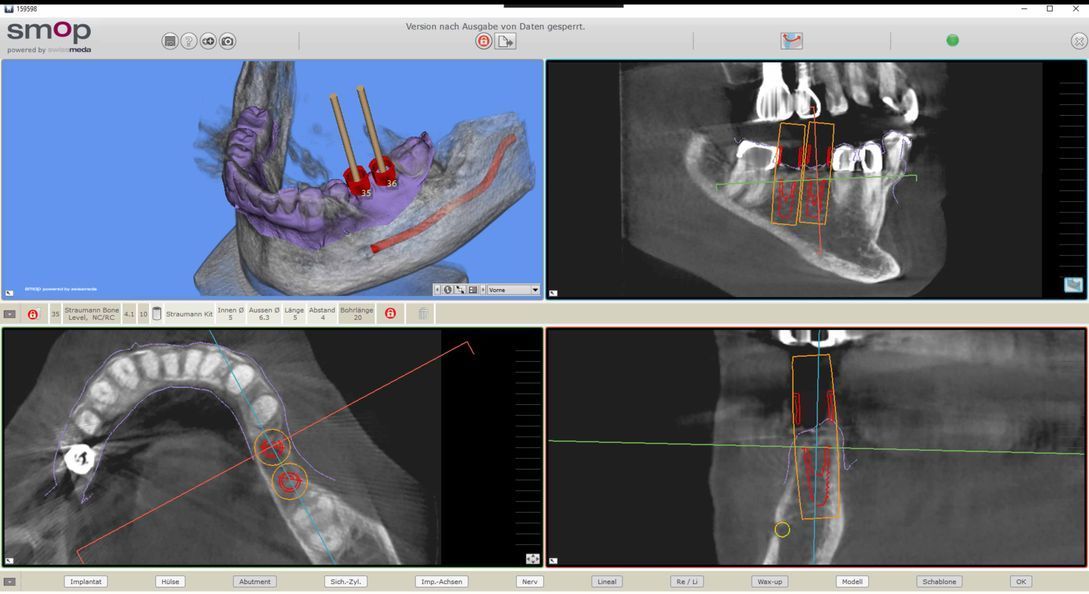Digital Dentistry
Low-dose (digital) X-rays and AI support
In our practice, X-rays are used exclusively for diagnostic purposes. The radiation dose has been significantly reduced in recent years through the use of highly sensitive films and digital techniques. Modern dental X-ray tubes are equipped with collimators, allowing irradiation of very small areas. "All-around radiators" belong to the past.
We utilize digital intraoral X-rays and digital panoramic radiographs in our practice. Our equipment undergoes regular professional maintenance, ensuring optimal performance.
Thanks to the company Nostic, we have access to an AI tool that assists us in diagnosing caries in the interdental areas.
Cerec AC
Ceramic treatments using the CEREC procedure are well established in modern dentistry. These are inlays, onlays, veneers, crowns and bridges made from a special, solid ceramic substance and stuck to the teeth. The tooth is carefully prepared first of all. Cavities and old fillings are removed. The tooth, its neighbours and opposite teeth are then photographed using a digital camera. No physical imprint is required. The reconstruction is then developed and calculated on the computer. The part is then cut from an industrially produced ceramic block in the practice and inserted. This all usually takes place in just one appointment.
Watch a video on Cerec AC here.

Template-based implantology
Since their introduction, implants have offered dentistry an outstanding way of replacing lost teeth. However, positioning implants in the bone necessitates a great deal of experience with the technology required. This means that examining the bone before implantation is extremely important.
The dimensions and quality of the bone and the neighbouring anatomical structures are examined. The spatial conditions must be precisely determined in order to assess the feasibility of implants. For this purpose, special X-rays (computer tomography or volume tomography) can be prepared to permit exact measurement of the bone. The findings permit the use of virtual planning software. This allows implants to be planned and depicted on the computer without further intervention. 3D images can make a significant contribution to the discussion.
In the event of highly complex anatomical conditions or places where extremely high precision is required in positioning the implant, surgical ‘templates’ can be created based on computer planning. These allow the operator to precisely transfer their plan to the oral cavity.




